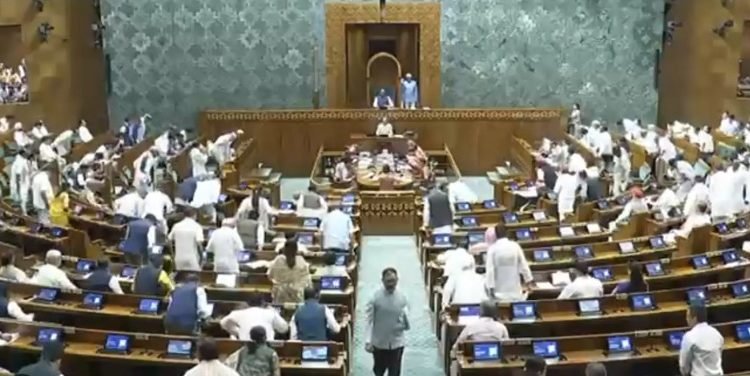Parliament Turns Into a Storm of Protests
India’s latest Monsoon Session of Parliament, held from July 21 to August 21, 2025, became a showcase of disruptions and protests. Instead of addressing key national issues, lawmakers engaged in frequent interruptions, costing taxpayers a massive ₹204 crore over the month.
Lok Sabha’s Minimal Productivity
The Lok Sabha, scheduled for 120 hours of work, managed just 37 hours, missing 83 hours of planned discussion. This represents a financial loss of approximately ₹124 crore. On certain days, productivity was shockingly low: July 24 and August 1 saw only 12 minutes of work, July 23 had 18 minutes, and August 4 managed 24 minutes. Only five days exceeded an hour of legislative work.
Rajya Sabha Also Falls Short
The Rajya Sabha performed slightly better with 47 hours of work, but still wasted nearly ₹80 crore due to stoppages and disruptions. The session highlighted inefficiency in both houses, showing how political tactics often overshadow public interest.
Taxpayer Money Wasted
These figures are not just statistics—they represent taxpayer money squandered on political noise. Observers noted the irony that 93% of MPs earn over ₹1 lakh per month, excluding allowances, yet public funds continue to be wasted without accountability.
Historical Pattern of Disruption
Frequent disruptions in Parliament are not new. Years of halted proceedings have eroded public confidence, delaying important legislation on budgets, social welfare, and reforms. The Monsoon Session is yet another example of how political unrest in the halls of power affects ordinary citizens.
Calls for Reform Grow Louder
In the aftermath, experts and citizens are advocating for measures such as ‘no work, no pay’ rules or mandatory sitting hours to ensure legislative efficiency. Until structural reforms are introduced, sessions like these serve as stark reminders that political chaos comes at a heavy price.



Comments are closed.